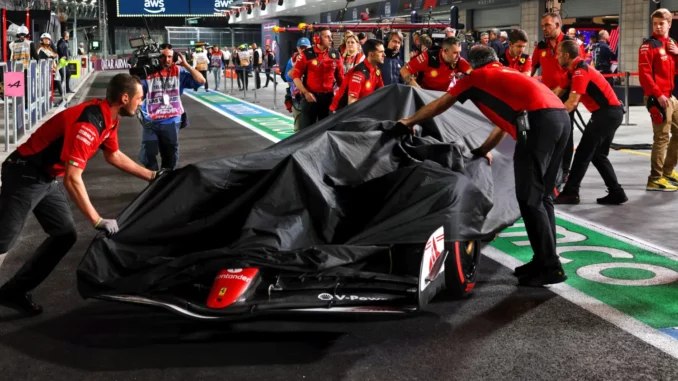
Ferrari and race stakeholders will discuss the damage sustained by Carlos Sainz during the opening practice session.
The first practice session in Nevada only lasted nine minutes before it was stopped due to Sainz hitting a dislodged water valve cover on the Strip. This happened because the concrete frame failed under the forces of the cars running over it.
The weekend got off to an embarrassing start as FP2 finally got underway two-and-a-half hours late, with no fans in attendance and the track feeling abandoned.
Sainz’s SF-23 suffered severe damage, with the monocoque, Internal Combustion Engine, Control Electronics, and Energy Store all deemed irreparable. Vasseur expressed his outrage during the following press conference, labeling the situation as “unacceptable.”
Sainz received a 10-place grid penalty for replacing his ES, as the stewards were unable to overlook the penalty for exceeding the permitted allocation of new engine components. Despite this setback, he finished in sixth place, while his team-mate Charles Leclerc, who had started in pole position, secured second place.
In the past, tracks have been responsible for compensating teams for damage caused during races. For instance, the Malaysian Grand Prix circuit had to pay Romain Grosjean after he collided with a loose drain in 2017.
When questioned about the possibility of Ferrari receiving compensation for the incident, Vasseur told the media, that it will be a private discussion held with all the stakeholders.
The way they handled it upsets me more than the incident itself.
The same situation occurred in Malaysia, and it happened twice in Baku with Valtteri Bottas in 2016 and George Russell in 2019.
Anticipating and fixing this is challenging, but how you handle the incident is crucial.
Leave a Reply